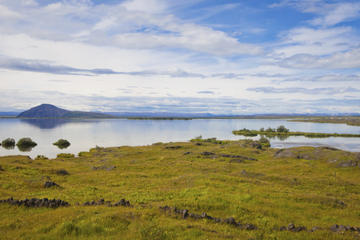Lake Mývatn
TIME : 2016/2/22 11:28:41

Lake Mývatn
As Iceland’s fourth largest lake, Mývatn is an important stop on any north Iceland road trip. Formed by a massive volcanic eruption over two millenniums ago, it is still geothermally active today and it is surrounded by surreal lava formations that are so characteristically Icelandic.
The lake got its name from the vast numbers of midges that gather on its shores, a witness to the vital role the lake plays in the region’s avifauna. In fact, Mývatn is one of the most famous pilgrimage sites in the world as far as ornithology (15 species of ducks, Barrow's goldeneye, red-necked phalarope, red-breasted merganser, gadwall, mallard, to name a few) and entomology (midges and black flies) are concerned, thanks to high biological productivity and the presence of numerous wetlands in the area.
The region surrounding Lake Mývatn doesn’t lack in attractions and sights either, which are all more of less located along the well-known ring road. The Hverfjall Crater is a 2,500-year-old, 1,500-foot (460-meter) high and 3,400-foot (1,040-meter) wide tephra tuff ring volcano that is nearly symmetrical and accessible by two walking paths, while Dimmuborgir (“the dark castles”) is a surreal, unusually shaped lava field composed of volcanic caves and rock formations resembling an ancient collapsed citadel, one of the most striking naturally-formed landscapes in Iceland. Even closer to Mývatn is the Lofthellir Lava Cave, which boasts the longest natural ice sculpture inside in a lava cave in Iceland at 1,213 feet (370 meters) long. Last but not least, the Mývatn Nature Baths are basically a less congested, less touristy version of the Blue Lagoon, and well worth a visit.
Practical Info
Lake Mývatn is located 90 kilometers (55 miles) southeast of Akureyri and can be reached via route 1 in just over an hour. It is also possible to circle the lake (36 kilometers or 22 miles) via bicycle; many stores in nearby Skútustaðir, Vogar and Reykjahlíð offer bicycle rentals for a day.
